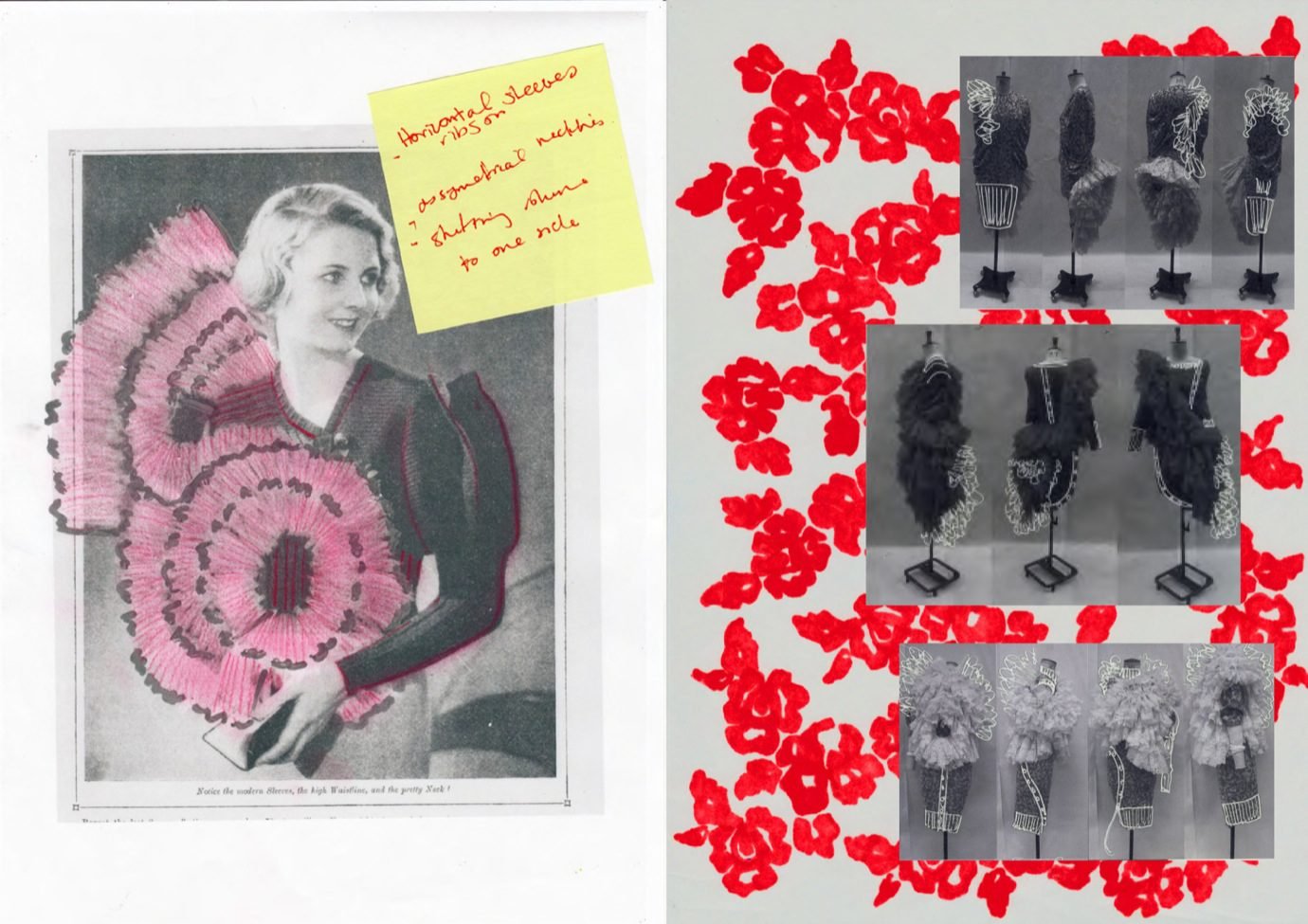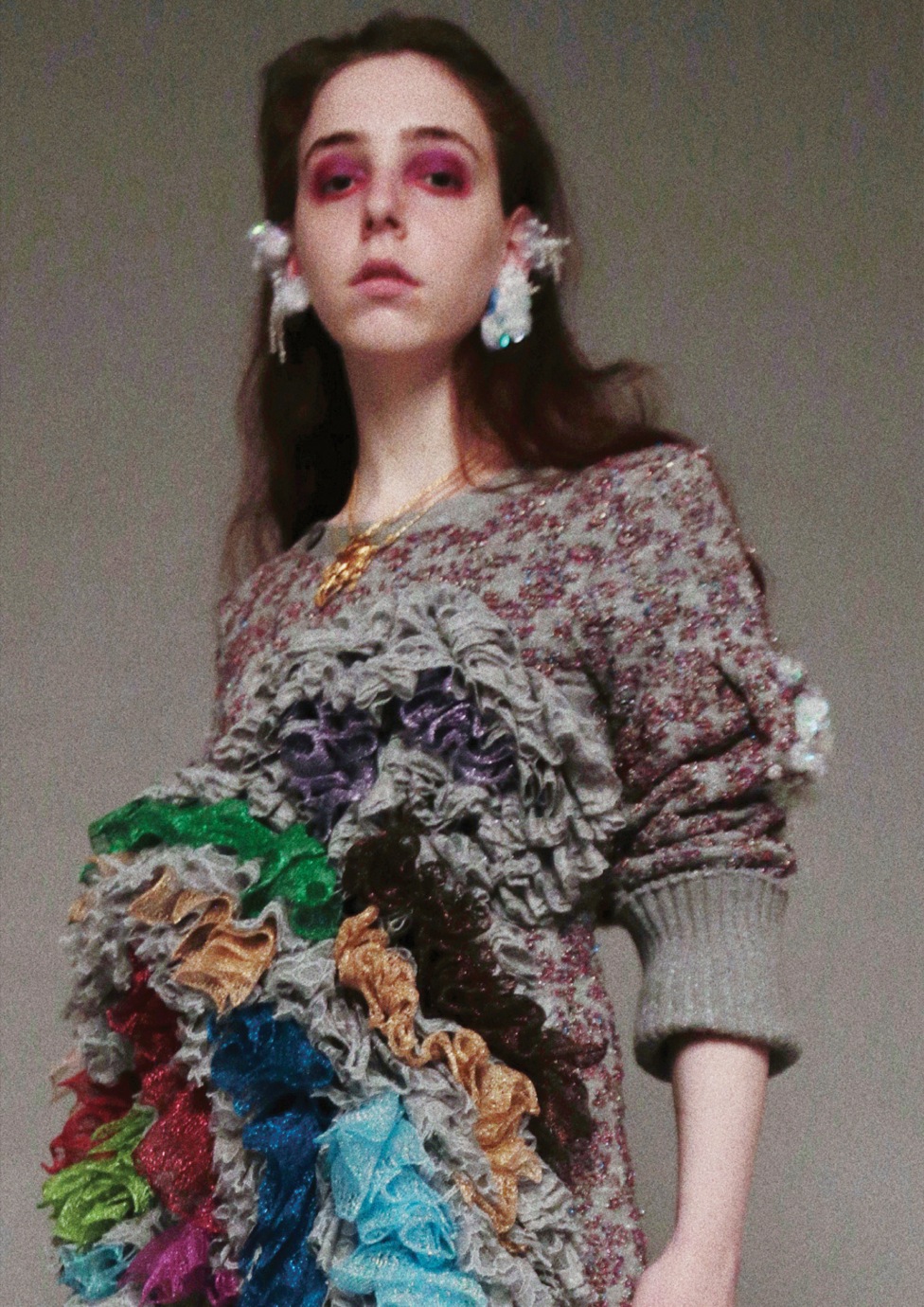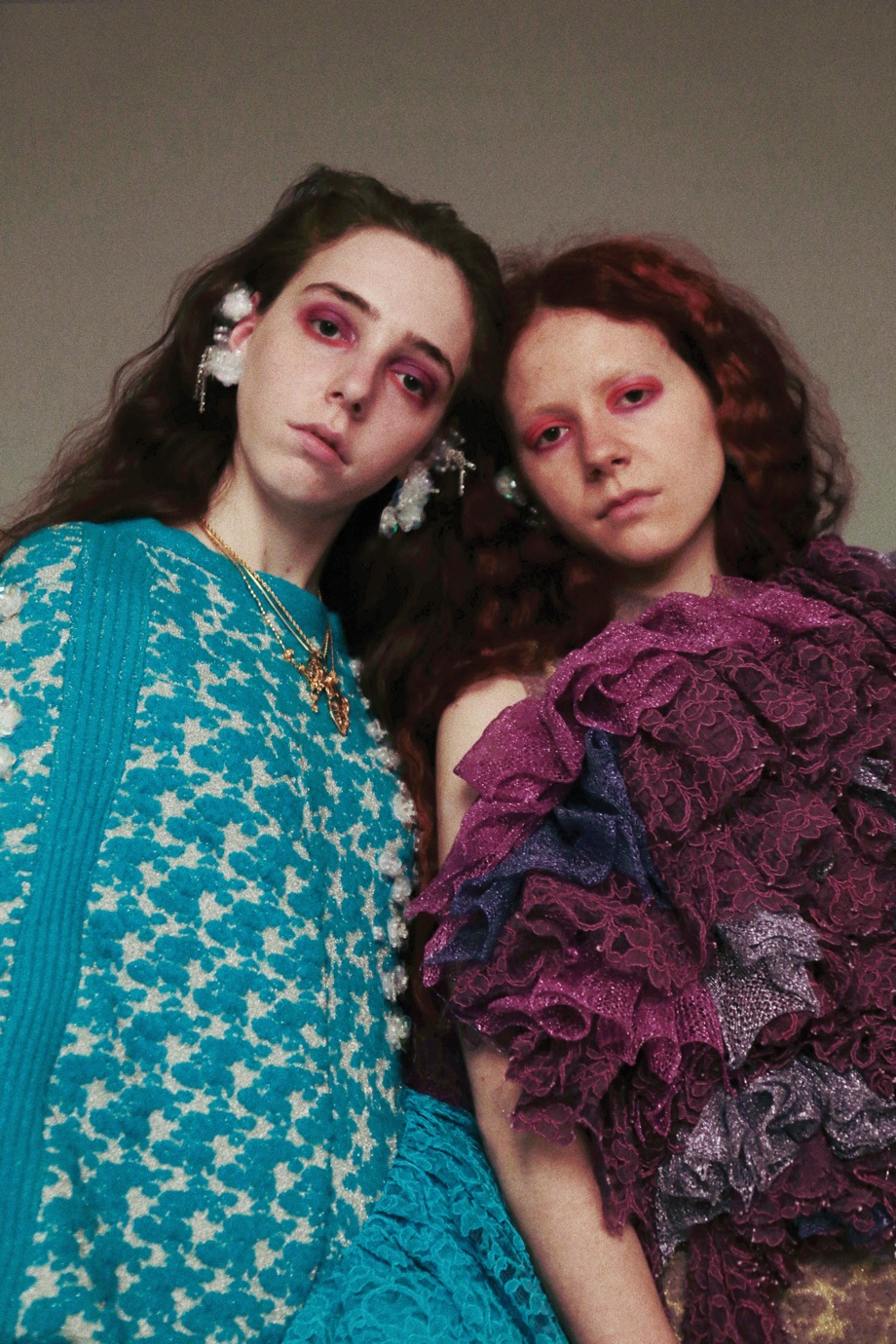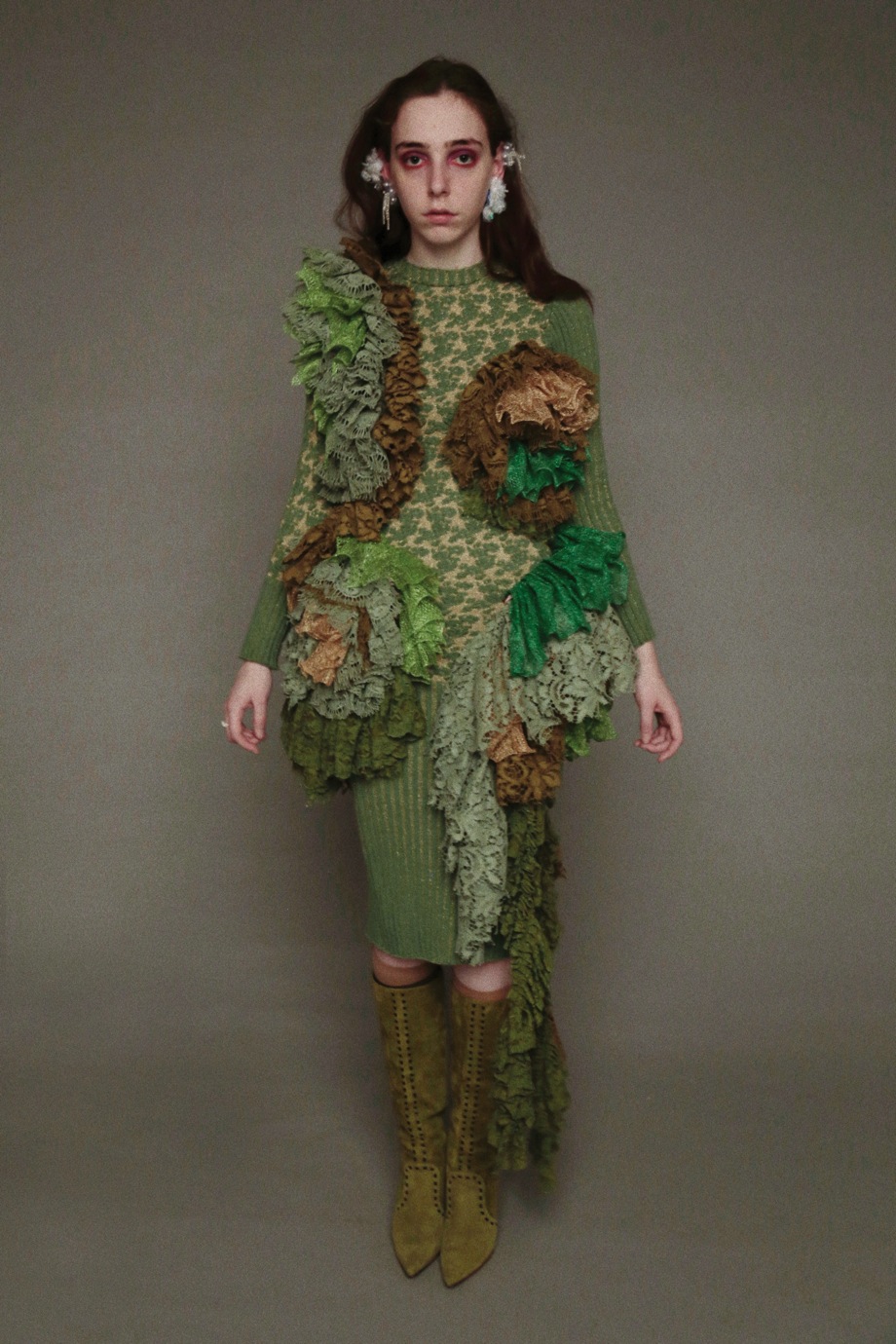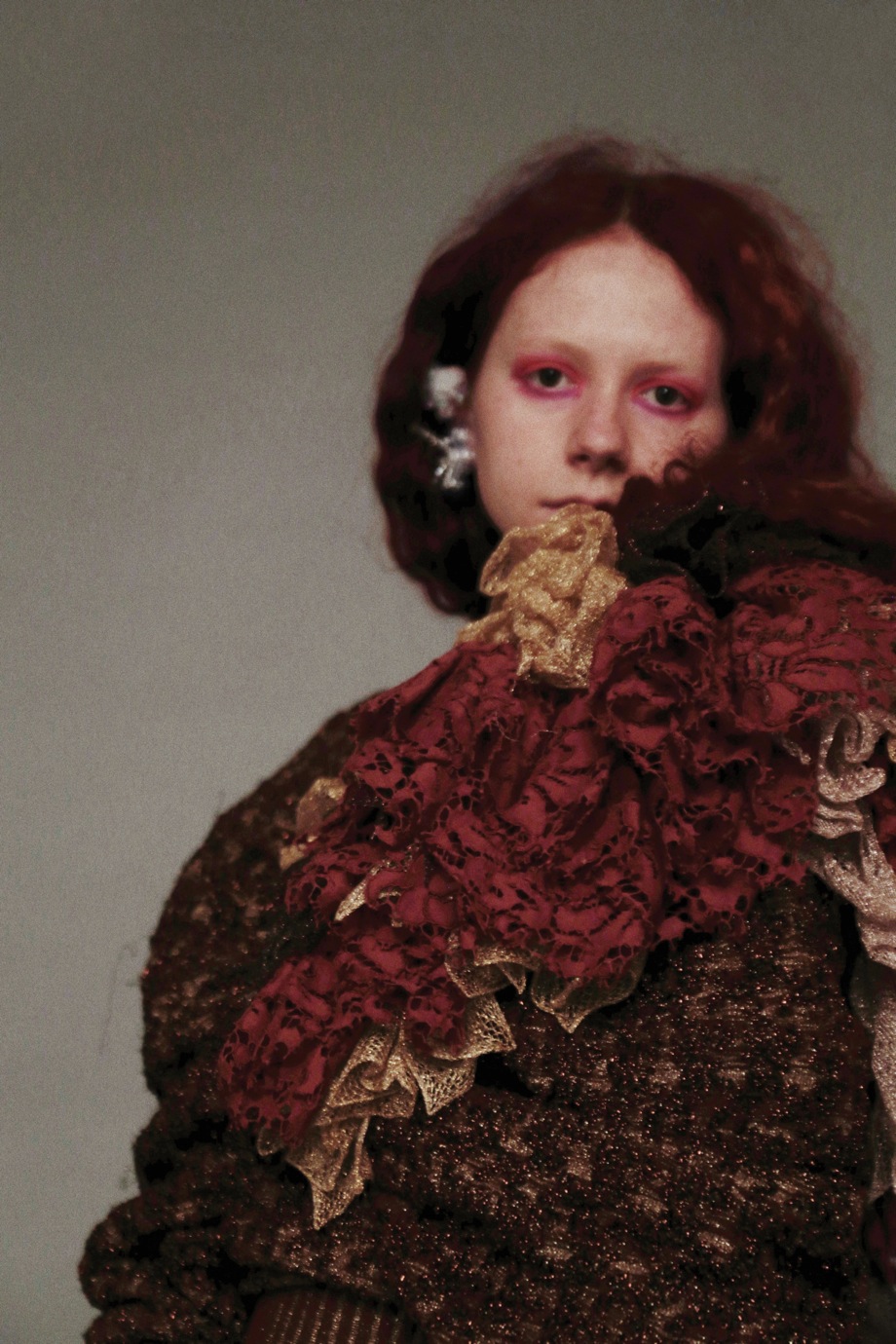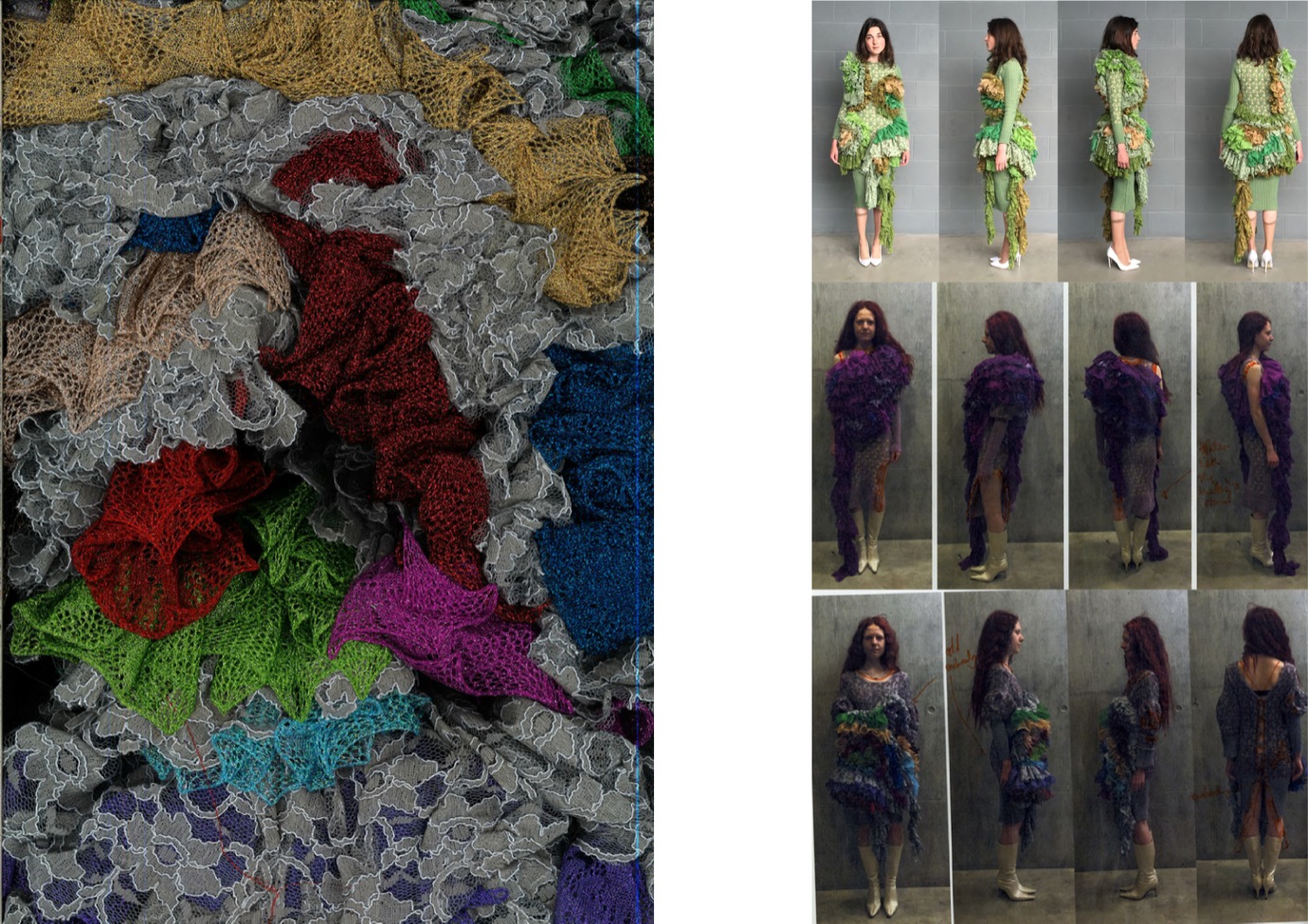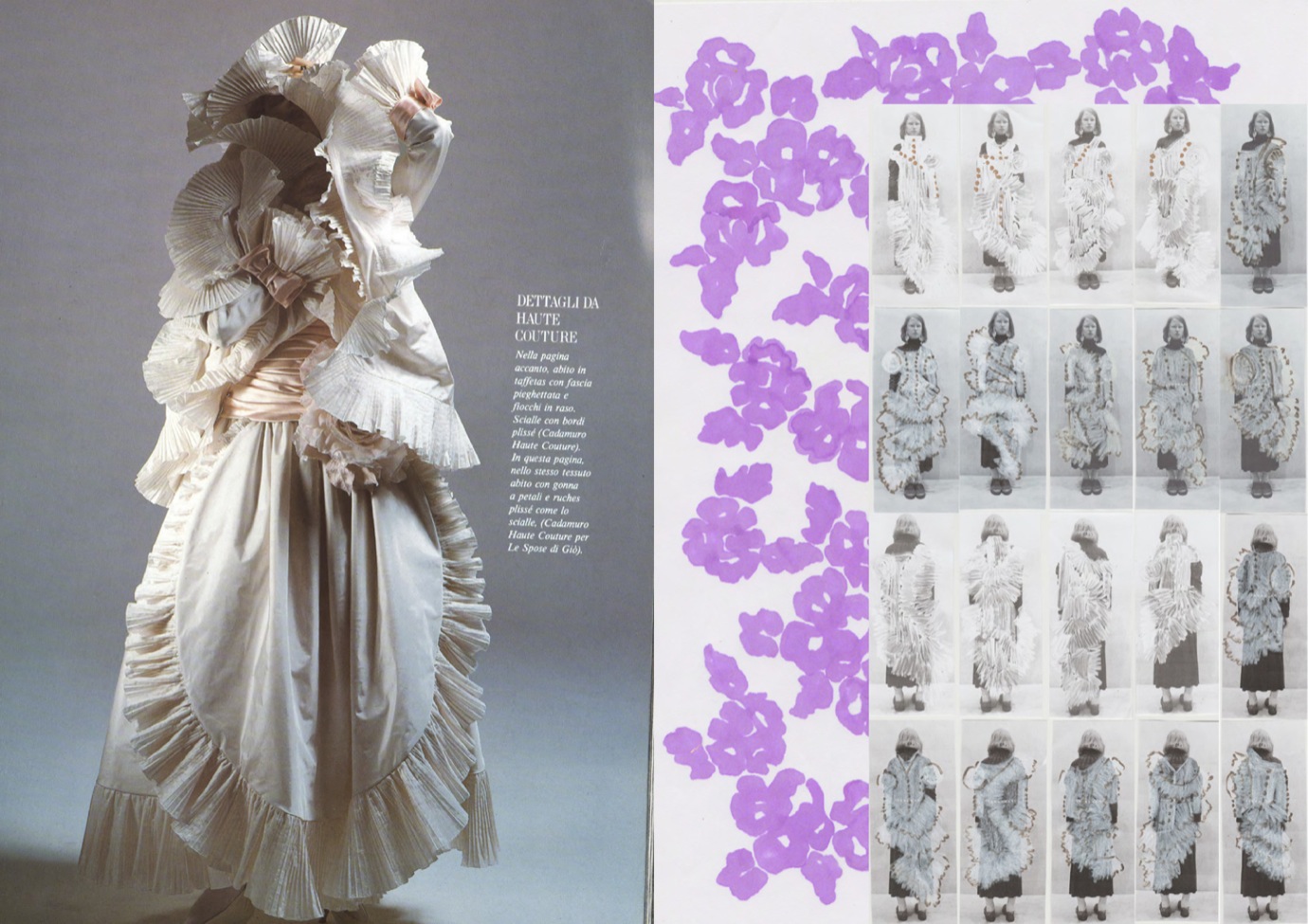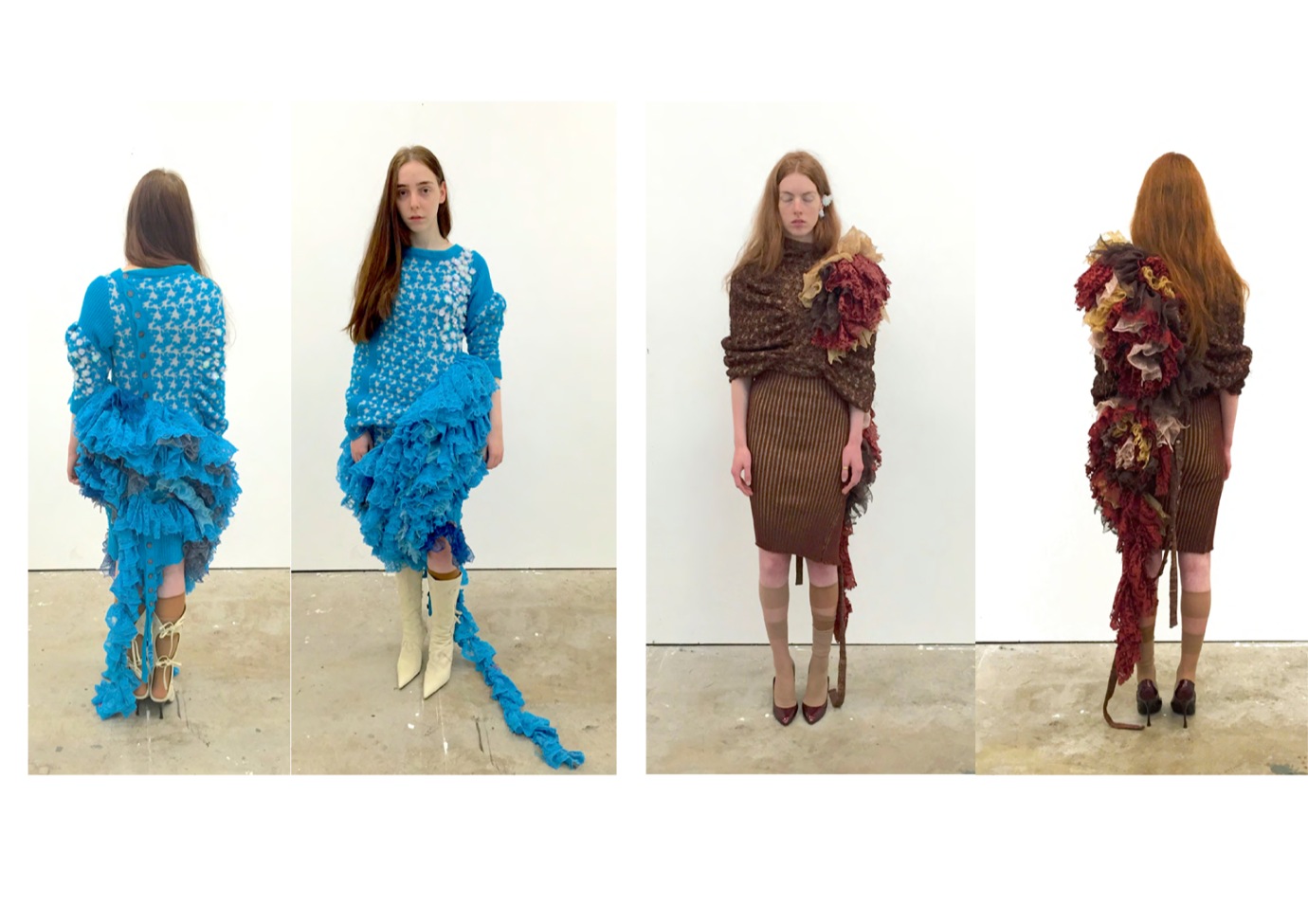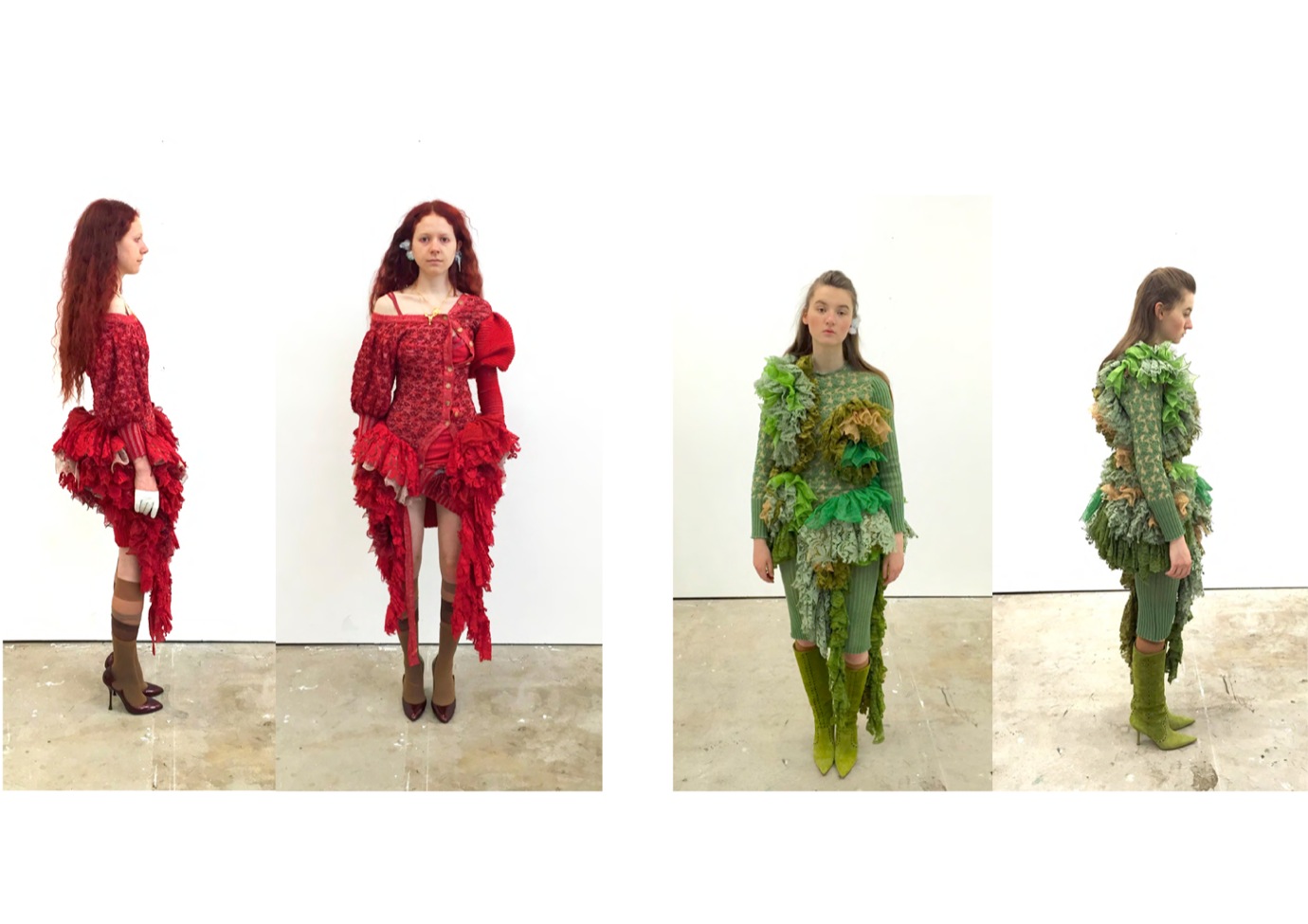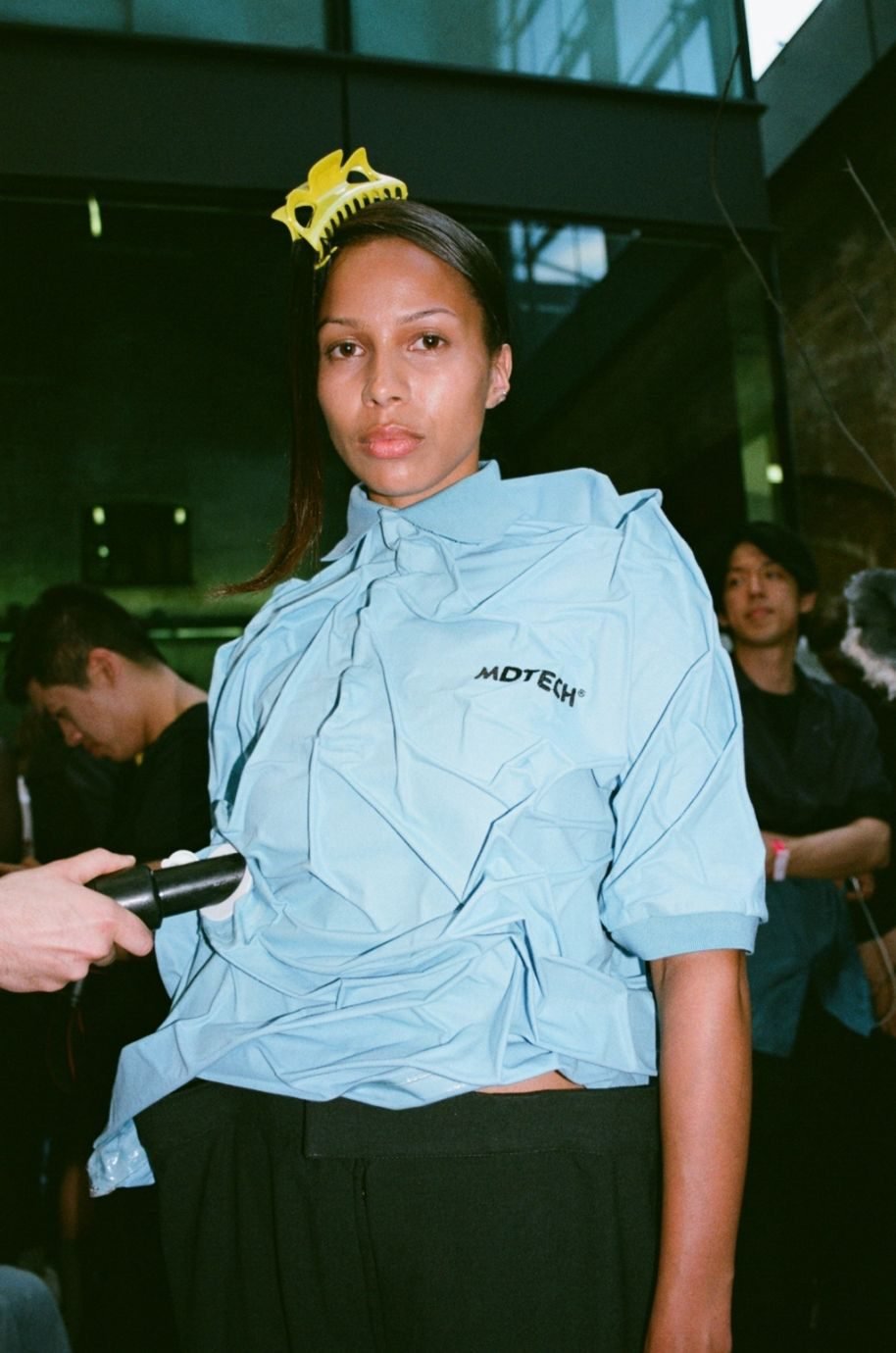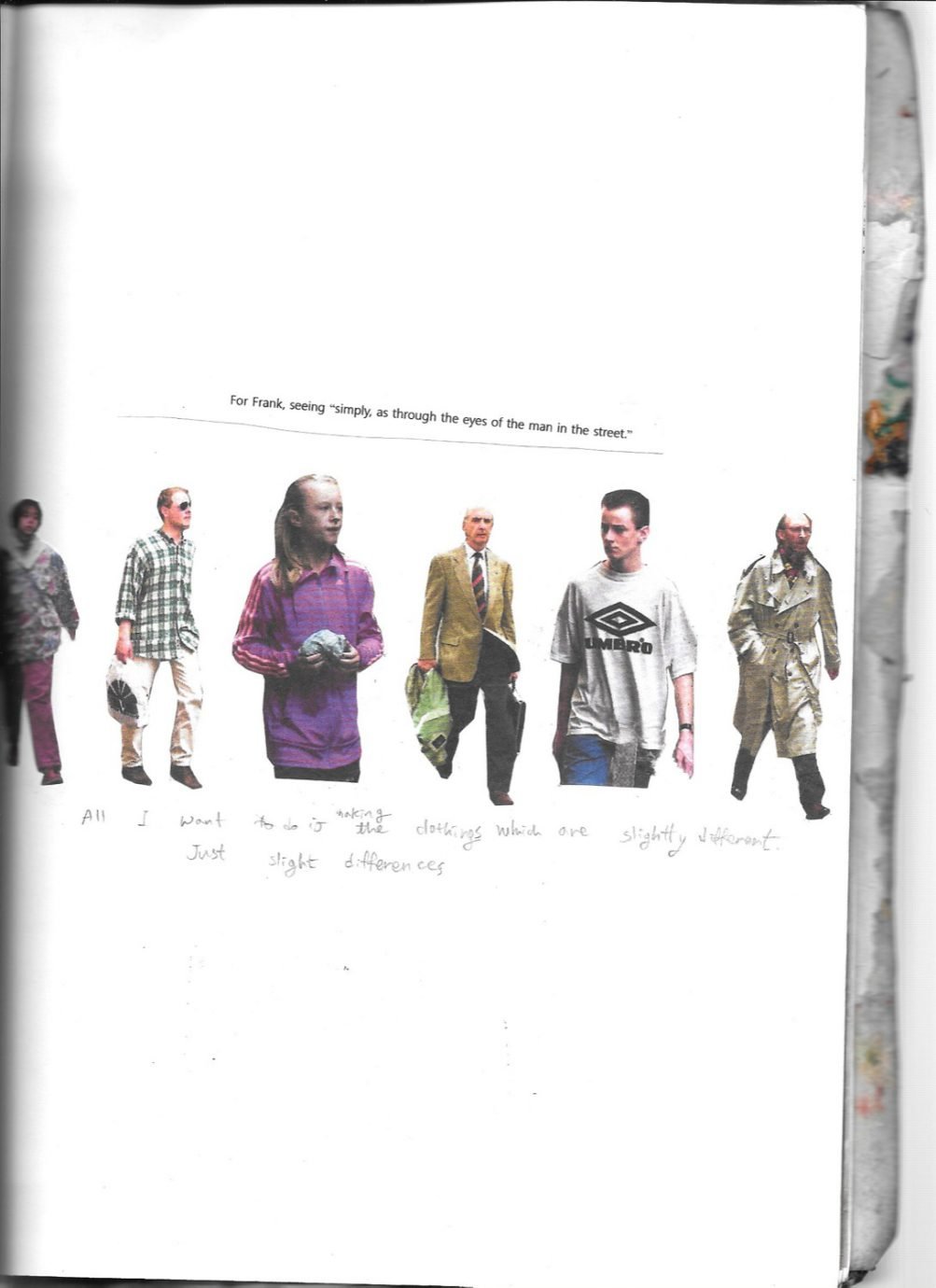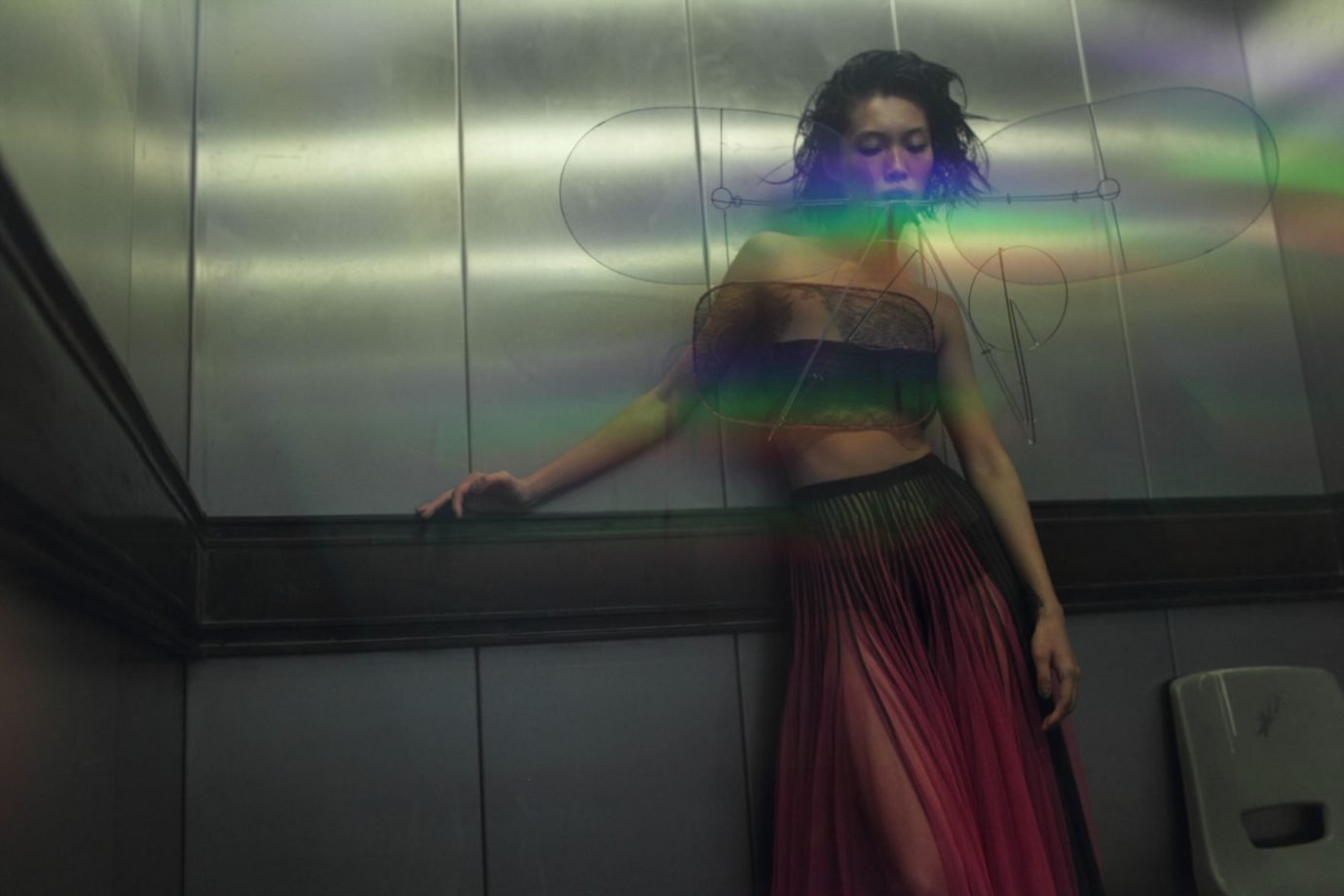What was the conceptual starting point of your graduate collection?
My sister and I spent a lot of time with my Italian grandmother in Australia when we were growing up, where our relatives would create all types of occasion wear for family events. Some of these garments, like wedding dresses, involved more laboursome tasks such as beading, sequining, making rosettes and layering tulle. There used to be piles of old 90’s magazines surrounding their workspace in the garage; it always took a while for the European issues to arrive in Melbourne. Together they would be working on extravagant pieces in their knitwear. I really admired this contrast of high and low, casual knits and jumpers worn for creating glamorous garments. I also liked the way they spoke about clothes. They would tell us about different pieces they worked on, which embroidery they used, or reminiscing how they learnt a specific technique. It all seemed very romantic and inspiring. My grandmother would always say that when you’re creating real fashion, you’re creating a fantasy. To me this is really interesting from a sociological perspective; I think most people use fashion to create or project an image, and I can also see this as a fantasy of how they view themselves or would like to be viewed as.
How did you create a visual narrative out of an abstract concept? Is it a challenge to translate a very conceptual idea into something practical?
My starting point gave me my initial references, but to visualize it I needed lots of research. In the beginning of the year my tutors encouraged me to look into a specific period of wedding dresses that I was interested in. As I progressed I realized I was very fascinated by the large volumes of the 80’s, and drawn to romantic elements of the late 70’s – such as found in Deborah Turbeville’s photos. I also did some more practical garment research, since it’s a challenge to find all details in photos alone. Looking at works from prolific Australian artist Howard Arkley, also gave me some colour references that resonated with my suburban childhood memories. Colour is really important to me and I kept on changing my mind on shades and tones. Since my collection used colour blocking, I guess I was concerned with how each look would next to one another as a collection.
“I’M REALLY INTERESTED IN WOMEN PORTRAYED THROUGH ART HISTORY, AND HOW CERTAIN SYMBOLS AND ARCHETYPES STILL IMBUE FEMALENESS AND CONNOTE A FEMININE AESTHETIC.”

